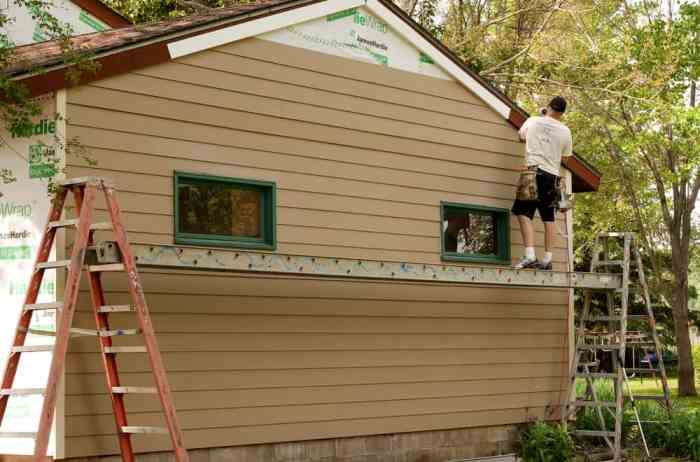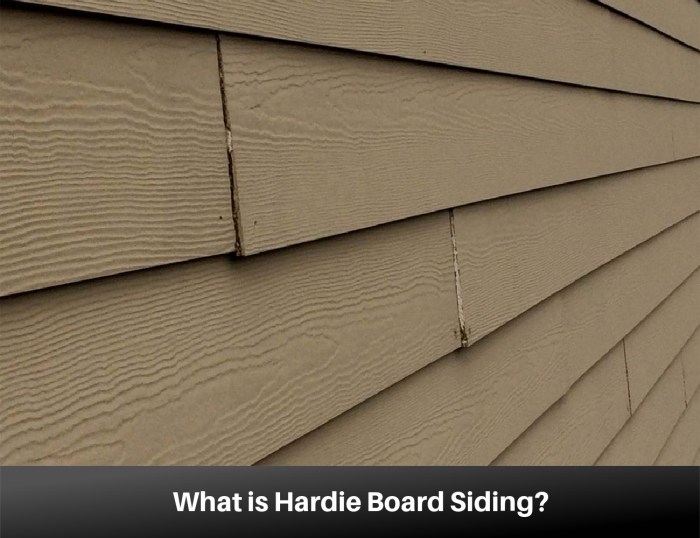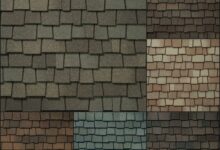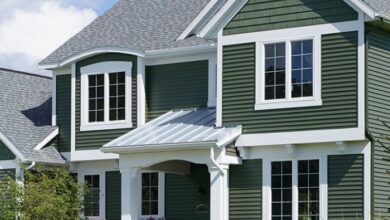Hardie Board Cost A Complete Guide
Hardie board cost is a crucial consideration for any homeowner undertaking an exterior renovation. Understanding the factors that influence this cost—from material selection and regional pricing variations to labor expenses and long-term maintenance—is paramount for successful budgeting and project planning. This guide dives deep into the intricacies of Hardie board pricing, providing a comprehensive analysis to help you navigate the process with confidence and make informed decisions.
We’ll break down the various Hardie board products, compare them to alternatives like vinyl siding and wood, and offer practical strategies for estimating costs accurately. We’ll also explore the long-term implications of your choice, helping you determine the true cost of ownership and maximize your return on investment. Get ready to become a Hardie board cost expert!
Hardie Board Pricing Factors

The cost of Hardie board, a popular choice for exterior cladding, isn’t a fixed number. Several interconnected factors influence the final price, making accurate budgeting crucial before starting a project. Understanding these factors will empower you to make informed decisions and avoid unexpected expenses. This detailed breakdown will explore the key variables that impact the overall cost of your Hardie board installation.
Material Type and Size
Hardie board comes in various types, each designed for specific applications and carrying a different price tag. Lap siding, for example, is a common choice for large areas, while trim boards are used for finishing details around windows and doors. Shingles, designed to mimic the look of traditional roofing materials, offer another option. The size of the boards also affects the overall cost; larger boards generally require less labor for installation, potentially offsetting a slightly higher material cost per board. Larger projects often benefit from bulk discounts, further complicating simple per-unit cost calculations. For instance, a 12-foot long board might cost more per linear foot than a shorter board, but less per square foot installed due to reduced labor.
Regional Price Variations
Geographical location significantly impacts Hardie board pricing. Transportation costs, regional demand, and even local taxes can cause substantial price differences across states and even between cities. Areas with higher construction activity or limited access to suppliers may experience higher prices. For example, a project in a rural area might incur higher transportation costs, leading to a higher overall price per square foot compared to a similar project in a major metropolitan area with numerous suppliers. This is a key factor to consider when budgeting for a Hardie board project.
Labor Costs
Labor represents a substantial portion of the overall project expense. The complexity of the installation, the experience level of the contractors, and the prevailing wage rates in your area all influence labor costs. A simple installation on a straightforward structure will be cheaper than a complex project involving intricate detailing or difficult-to-access areas. Furthermore, experienced and reputable contractors tend to charge more than less experienced ones, although their expertise often leads to a more efficient and higher-quality installation. It’s essential to obtain multiple quotes from different contractors to compare pricing and ensure you are getting a fair price for both materials and labor.
Price Comparison Table
| Hardie Board Product | Region (Example) | Price per Square Foot (Estimate) | Notes |
|---|---|---|---|
| Lap Siding | Northeast US | $4.50 – $6.50 | Prices vary based on thickness and board size. |
| Trim Boards | Northeast US | $5.00 – $7.00 | Smaller boards, more intricate cuts, higher cost. |
| Shingles | Southeast US | $6.00 – $8.00 | Higher cost due to specialized installation. |
| Lap Siding | Midwest US | $4.00 – $5.50 | Generally lower cost due to competition and transportation. |
Note: The price per square foot estimates provided in the table are approximate and serve as illustrative examples only. Actual prices will vary depending on the specific factors discussed above. Always obtain multiple quotes from reputable contractors in your area to determine accurate pricing for your project.
Cost Estimation and Budgeting
Accurately estimating the cost of Hardie board installation is crucial for successful project planning and execution. Underestimating can lead to budget overruns and project delays, while overestimating can tie up unnecessary funds. This section provides a practical framework for creating a realistic budget, encompassing materials, labor, and contingency planning.
Accurate cost estimation involves a multi-step process that considers various factors influencing the final price. These factors include the size of the project, the complexity of the installation (e.g., intricate trim work, multiple layers), regional labor rates, and the specific type of Hardie board chosen. By systematically evaluating these elements, you can develop a comprehensive budget that minimizes financial surprises.
Realistic Hardie Board Installation Cost Estimates
Estimating costs requires understanding the variability inherent in construction projects. A small shed cladding project might cost significantly less than a full house exterior renovation. The following examples illustrate the range of potential expenses:
- Small Project (e.g., shed siding, 100 sq ft): Material costs could range from $500 to $1000, while labor might cost an additional $500-$1000, totaling $1000-$2000. This estimate assumes relatively simple installation.
- Medium Project (e.g., garage siding, 500 sq ft): Materials could cost $2500 to $5000, with labor potentially ranging from $2500 to $5000, resulting in a total cost of $5000 to $10,000. This range accounts for moderate complexity.
- Large Project (e.g., entire house exterior, 2000 sq ft): Material costs could easily reach $10,000 to $20,000 or more, depending on the chosen product line and trim details. Labor costs for a project of this scale could range from $10,000 to $20,000, potentially exceeding $20,000 depending on regional labor rates and the intricacy of the design. Total costs could easily reach $20,000 to $40,000 or more.
These are illustrative examples only. Actual costs will vary based on the specifics of each project.
Step-by-Step Guide to Estimating Hardie Board Costs
A systematic approach ensures a more accurate cost estimate. Follow these steps:
- Measure the surface area: Accurately measure the total area requiring Hardie board installation. Include all walls, gables, and other surfaces.
- Determine material requirements: Calculate the amount of Hardie board needed, adding extra for cuts and waste (typically 10-15%). Factor in trim pieces, fasteners, and any necessary underlayment.
- Obtain material pricing: Get quotes from multiple suppliers to compare prices. Consider transportation costs.
- Estimate labor costs: Obtain quotes from multiple contractors. Clearly define the scope of work in your request for quotes.
- Factor in permits and inspections: Check local building codes and obtain necessary permits. Account for inspection fees.
- Add contingency: Include a contingency buffer (10-20%) to account for unexpected costs or delays.
Sample Hardie Board Installation Budget
This example budget demonstrates the breakdown of costs for a medium-sized project (500 sq ft):
| Item | Cost |
|---|---|
| Hardie Board Materials | $3,000 |
| Fasteners and Accessories | $500 |
| Labor | $3,500 |
| Permits and Inspections | $200 |
| Contingency (15%) | $1,050 |
| Total Estimated Cost | $8,250 |
Remember, this is a sample budget; your actual costs will vary.
Accounting for Unexpected Costs
Unexpected costs are inevitable in construction. To mitigate their impact:
- Thorough planning: Detailed planning minimizes unforeseen issues.
- Contingency fund: Allocate a sufficient contingency fund (10-20% of the total estimated cost).
- Open communication with contractors: Maintain open communication with contractors to address any emerging issues promptly.
- Regular site visits: Regularly inspect the worksite to identify potential problems early.
By proactively addressing these factors, you can significantly reduce the likelihood of significant cost overruns.
Comparison with Alternative Materials
Choosing the right exterior cladding material involves careful consideration of several factors, including initial cost, long-term maintenance, and aesthetic appeal. While Hardie board offers a compelling combination of durability and longevity, it’s crucial to compare its cost-effectiveness against popular alternatives like vinyl siding and wood. Understanding these differences can significantly impact your overall project budget and long-term homeownership expenses.
Hardie board, vinyl siding, and wood each present unique advantages and disadvantages concerning initial investment and ongoing maintenance. Vinyl siding typically boasts the lowest upfront cost, while wood can vary significantly depending on the type and quality of lumber used. Hardie board falls somewhere in between, offering a balance between initial expense and long-term value. However, the true cost-effectiveness of each material is revealed when considering the complete lifecycle, encompassing both initial outlay and ongoing maintenance requirements.
Vinyl Siding Cost Comparison
Vinyl siding is often the most affordable option upfront. Its relatively low cost stems from its mass production and ease of installation. However, this lower initial investment can be offset by its shorter lifespan and greater susceptibility to damage from impacts, extreme weather, and UV degradation. While vinyl siding is easy to clean, significant damage may necessitate costly repairs or even complete replacement, ultimately increasing the total cost of ownership over time. For example, a homeowner might save $5,000 initially by choosing vinyl over Hardie board, but could face a $3,000 repair bill within 15 years due to storm damage, whereas Hardie board might require only minor maintenance during that same period.
Wood Siding Cost Comparison
Wood siding offers a classic, aesthetically pleasing look that many homeowners find appealing. However, the cost of wood can vary dramatically based on the type of wood (e.g., cedar, redwood, pine), its quality, and the complexity of the installation. High-quality wood siding can be significantly more expensive than Hardie board or vinyl siding initially. Furthermore, wood requires regular maintenance, including painting or staining every few years to protect against rot, insect infestation, and weathering. Neglecting this maintenance can lead to costly repairs and premature deterioration. A homeowner opting for premium cedar siding might spend twice as much initially as on Hardie board, and face annual maintenance costs exceeding those associated with Hardie board.
Hardie Board’s Long-Term Value Proposition
Hardie board’s higher initial cost is often justified by its exceptional durability and longevity. Its cement composition makes it highly resistant to fire, rot, insects, and impact damage. This inherent resilience translates to lower long-term maintenance costs compared to vinyl siding or wood. While it might require occasional repainting, the frequency is significantly less than wood, and the material itself is less prone to needing replacement due to damage. The longer lifespan of Hardie board ultimately leads to a lower total cost of ownership over the lifetime of the house.
Lifespan and Maintenance Comparison
The following comparison highlights the key differences in lifespan and maintenance requirements:
Understanding the long-term implications of material selection is crucial. While upfront costs are important, the total cost of ownership, considering maintenance and lifespan, should be the primary factor in your decision-making process.
- Hardie Board: Lifespan: 50+ years; Maintenance: Repainting every 10-15 years; occasional minor repairs.
- Vinyl Siding: Lifespan: 20-30 years; Maintenance: Occasional cleaning; repairs can be costly due to susceptibility to damage.
Installation Costs and Considerations

The total cost of a Hardie board siding project extends beyond the material price; labor and associated costs significantly impact the final bill. Understanding these factors is crucial for accurate budgeting and project planning. This section details the various elements influencing installation expenses, providing a clearer picture of what to expect.
Labor Costs
Labor costs represent a substantial portion of the overall Hardie board installation expense. Several factors influence the hourly or daily rate charged by installers. These include the installer’s experience and skill level, geographical location (labor rates vary significantly by region), and the current market demand for skilled labor. Experienced installers, often possessing specialized knowledge of Hardie board installation techniques, command higher rates than less experienced workers. Furthermore, high demand in certain areas can drive up labor costs. For example, a coastal region undergoing extensive rebuilding after a hurricane might experience significantly higher labor costs compared to a less active market. Finally, the complexity of the project directly impacts labor hours and therefore, cost.
Installation Time
The time required to install Hardie board varies considerably depending on several key factors. Project size is a primary determinant; a small shed will require far less time than a large multi-story house. Project complexity also plays a crucial role. Intricate designs, multiple angles, and the need for extensive trimming all add to the installation time. For instance, a house with numerous dormers and complex architectural details will necessitate more labor hours than a simple rectangular structure. Weather conditions can also significantly impact installation time, as inclement weather may necessitate delays or interruptions. Finally, the installer’s efficiency and experience are important factors; a skilled team will generally complete the job faster than a less experienced crew. A large, complex project might take several days or even weeks to complete, while a smaller, simpler project could be finished in a single day.
Additional Installation Costs
Beyond material and labor costs, several additional expenses can arise during Hardie board installation. Waste disposal fees are common, as the installation process generates scrap material. Local regulations often dictate the proper disposal methods, impacting the cost. Permitting fees may also be required, depending on local building codes and the scope of the project. These permits ensure compliance with safety and construction standards. For instance, some municipalities require permits for any exterior work exceeding a certain square footage. Unexpected repairs or issues, such as rotted sheathing or damaged underlying structure, can also add to the overall cost, requiring additional time and materials. A realistic budget should incorporate a contingency for unforeseen circumstances.
Hardie Board Installation Flowchart
The following flowchart illustrates a typical sequence of steps in Hardie board installation:
[Imagine a flowchart here. The flowchart would begin with “Project Planning & Preparation,” branching to “Surface Preparation (Cleaning, Repair),” then to “Installation of Sheathing (if necessary),” followed by “Measuring & Cutting Hardie Board,” then “Installation of Hardie Board,” and finally “Finishing & Cleanup.” Each step would have a brief description, such as “Ensure surface is clean, dry, and free of debris” for “Surface Preparation.” The flowchart would visually represent the sequential nature of the process.]
Long-Term Cost Analysis

Choosing the right exterior cladding is a significant investment, and understanding the long-term financial implications is crucial. While initial costs might vary, the true value of a material becomes apparent over its lifespan, factoring in maintenance, repairs, and eventual replacement. This section analyzes the long-term cost of Hardie board siding compared to alternatives, highlighting its potential for significant savings.
Hardie board’s longevity and low maintenance requirements contribute to a lower total cost of ownership over time. Unlike wood siding, which requires regular painting, staining, and potential repairs due to rot, insect damage, or warping, Hardie board offers superior durability and resistance to these issues. This translates to substantial cost savings over the decades. Similarly, vinyl siding, while initially cheaper, can become brittle and fade over time, requiring more frequent replacement than Hardie board.
Hardie Board’s Lifespan and Maintenance, Hardie board cost
Hardie board siding, with proper installation and minimal maintenance, boasts an impressive lifespan of 30-50 years or more. This significantly extends the period before replacement becomes necessary, unlike wood siding, which may need replacement or major repairs within 15-20 years depending on climate and maintenance. Regular cleaning with a pressure washer (avoiding excessive pressure) and occasional spot repairs for minor damage are generally all that’s needed to maintain its aesthetic appeal and structural integrity. The reduced maintenance translates directly into lower labor and material costs over the life of the siding.
Total Cost of Ownership Comparison
To illustrate the long-term cost advantage, let’s compare the total cost of ownership (TCO) of Hardie board with wood and vinyl siding over a 20-year period. This comparison considers initial material costs, installation, maintenance, and eventual replacement. While initial material costs for Hardie board may be higher, the reduced maintenance and longer lifespan lead to significant savings over time. For instance, a hypothetical 2,000 sq ft home might see an initial cost difference of $5,000-$10,000 between Hardie board and vinyl siding. However, the elimination of repainting costs every 5-7 years for wood siding, or the potential for premature vinyl siding failure and replacement, quickly offsets this initial investment.
Potential Savings from Reduced Maintenance and Repairs
The potential savings from reduced maintenance and repairs are substantial. Consider the costs associated with repainting wood siding – labor, materials, and potential scaffolding. These costs can easily reach thousands of dollars every few years. Hardie board eliminates these recurring expenses. Similarly, repairing damaged wood siding due to rot or insect infestation can be far more expensive than addressing minor damage to Hardie board. The long-term cost savings from reduced maintenance and repair are a major factor in Hardie board’s overall value proposition.
Return on Investment (ROI) of Hardie Board
The following table illustrates the potential return on investment (ROI) of Hardie board over a 20-year period compared to wood and vinyl siding, based on hypothetical costs for a 2,000 sq ft home. These figures are estimates and actual costs may vary depending on location, labor rates, and specific product choices.
| Material | Initial Cost | Maintenance Cost (20 years) | Replacement Cost (20 years) | Total Cost (20 years) |
|---|---|---|---|---|
| Hardie Board | $15,000 | $1,000 | $0 | $16,000 |
| Wood Siding | $10,000 | $8,000 | $5,000 | $23,000 |
| Vinyl Siding | $8,000 | $2,000 | $3,000 | $13,000 |
Note: This table presents a simplified example. Actual costs will vary based on numerous factors. The replacement cost for Hardie board is assumed to be zero within the 20-year timeframe, reflecting its longer lifespan. Wood siding is assumed to require repainting and potential repairs, and vinyl siding may require partial or full replacement due to aging and weathering. This table demonstrates the potential for significant long-term savings with Hardie board despite a higher initial investment.
Visual Representation of Costs: Hardie Board Cost
Understanding the cost differences between various siding materials is crucial for effective project budgeting. A clear visual representation can significantly aid this understanding, allowing for easy comparison and informed decision-making. Let’s explore how this can be achieved.
A hypothetical scenario comparing Hardie board and vinyl siding for a 1,500 square foot home renovation illustrates the cost differences effectively. Assume the Hardie board installation costs $12 per square foot, while vinyl siding costs $8 per square foot. This initial difference, though seemingly small, quickly escalates when considering the total surface area. The Hardie board option would cost $18,000 (1500 sq ft x $12/sq ft), while the vinyl siding option would cost $12,000 (1500 sq ft x $8/sq ft), resulting in a $6,000 difference. This discrepancy highlights the significant impact of material choice on the overall project budget.
Cost Breakdown Visualization for Hardie Board Installation
A bar chart would provide an excellent visual representation of the cost breakdown for a Hardie board installation project. The horizontal axis would represent the different cost components, while the vertical axis would represent the dollar amount. Each cost component would be represented by a colored bar, with the length of the bar corresponding to the cost.
The chart would clearly display three major cost categories: Materials, Labor, and Other Costs. The “Materials” bar would be the longest, representing the largest portion of the total cost, encompassing the cost of Hardie board panels, fasteners, primers, and paints. The “Labor” bar would be the second longest, reflecting the significant labor involved in installation, including preparation, panel installation, and finishing. Finally, a smaller “Other Costs” bar would represent miscellaneous expenses like permits, waste disposal, and potential equipment rentals.
For example, if the total project cost is $20,000, the “Materials” bar might represent $10,000, the “Labor” bar $7,000, and the “Other Costs” bar $3,000. Each bar would be clearly labeled with its corresponding cost and percentage of the total project cost. This visual representation would allow for quick comprehension of the cost distribution, facilitating informed decision-making and transparent budgeting.
Ultimately, determining the true cost of Hardie board involves a multifaceted assessment. While the initial investment might seem higher than some alternatives, the long-term benefits—including superior durability, low maintenance, and increased home value—often outweigh the upfront expenses. By carefully considering the factors Artikeld in this guide, you can confidently budget for your Hardie board project, ensuring a beautiful, long-lasting, and ultimately cost-effective exterior for your home. Remember to factor in regional variations, labor costs, and potential unforeseen expenses for a truly accurate estimate.
Question Bank
What is the average lifespan of Hardie board siding?
Hardie board siding typically boasts a lifespan of 30-50 years, significantly longer than vinyl siding.
Does Hardie board require regular painting?
While Hardie board is inherently durable, it’s recommended to repaint every 5-10 years to maintain its appearance and protect it from the elements.
Can I install Hardie board myself?
While DIY installation is possible, it’s generally recommended to hire experienced professionals for a quality, long-lasting installation. Improper installation can void warranties.
How does Hardie board compare to fiber cement alternatives?
Hardie board is a leading brand of fiber cement siding. Other fiber cement options exist, and price comparisons should be done on a case-by-case basis, taking into account product specifications and regional pricing.
What are the warranty options available for Hardie board?
Warranty details vary depending on the specific Hardie board product and may cover defects in materials or workmanship. Check the manufacturer’s website for detailed information.









